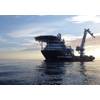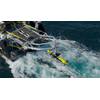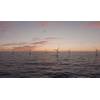Aberdeen Subsea Section for DNV GL
The subsea sector is reportedly set to quadruple in size, with projected annual revenues of $137.83bn by 2020. Currently 45% of the UKCS (United Kingdom Continental Shelf) production comes from subsea wells and with an increased focus on maximizing economic recovery, one of the key challenges is to increase the use of subsea tie-backs to existing installations.
To increase our ability to react to this growth a new DNV GL subsea team has been created. Martin Fowlie, Head of Section for the new unit, says: “DNV GL is very much looking to the future by bringing together the best of our technical expertise in this area. For many years, DNV GL in Aberdeen has been involved in the certification of subsea equipment and components. We have, over time, been privileged to call practically the entire procurement chain our customers, for certification or verification services. This puts us in a very strong position in understanding the challenges facing the subsea market.”
He continues: “We have a great local team and a strong network within the new DNV GL organization to really support the customer regardless of the size of the development, or the novelty of the technology.”
The creation of the new subsea section comes on the back of the announcement earlier this month by DNV GL at Offshore North Seas (ONS) when a new ‘Standard for certification of subsea equipment and components’ was launched. It is thought that major efficiencies will be the resultant benefit of the standard, by means of streamlined quality control and manufacturing processes.
The new standard is complementary to the verification documents already in existence, and is a welcome addition to the portfolio for the subsea sector. DNV GL also has a number of Joint Industry Projects (JIPs) underway to standardise and streamline efficiency issues in the subsea industry. A recent cooperation project related to subsea documentation seeks to present a minimum unified set of documentation requirements for all major subsea components. Another current project addresses common specifications for steel forgings.
Bert Droy, Business Development Lead for Subsea and Floaters in Aberdeen concludes: “Having a dedicated section for subsea, with clear guidelines from which they can draw, is good news. Meetings are planned with our DNV GL peers globally, and the outcome will reinforce how we drive this forward. Of course, the most important task is to ensure that we communicate the content to the various subsea stakeholders, so we will be engaging with the industry to communicate the content of the standard in the near future.”
















 February 2024
February 2024



